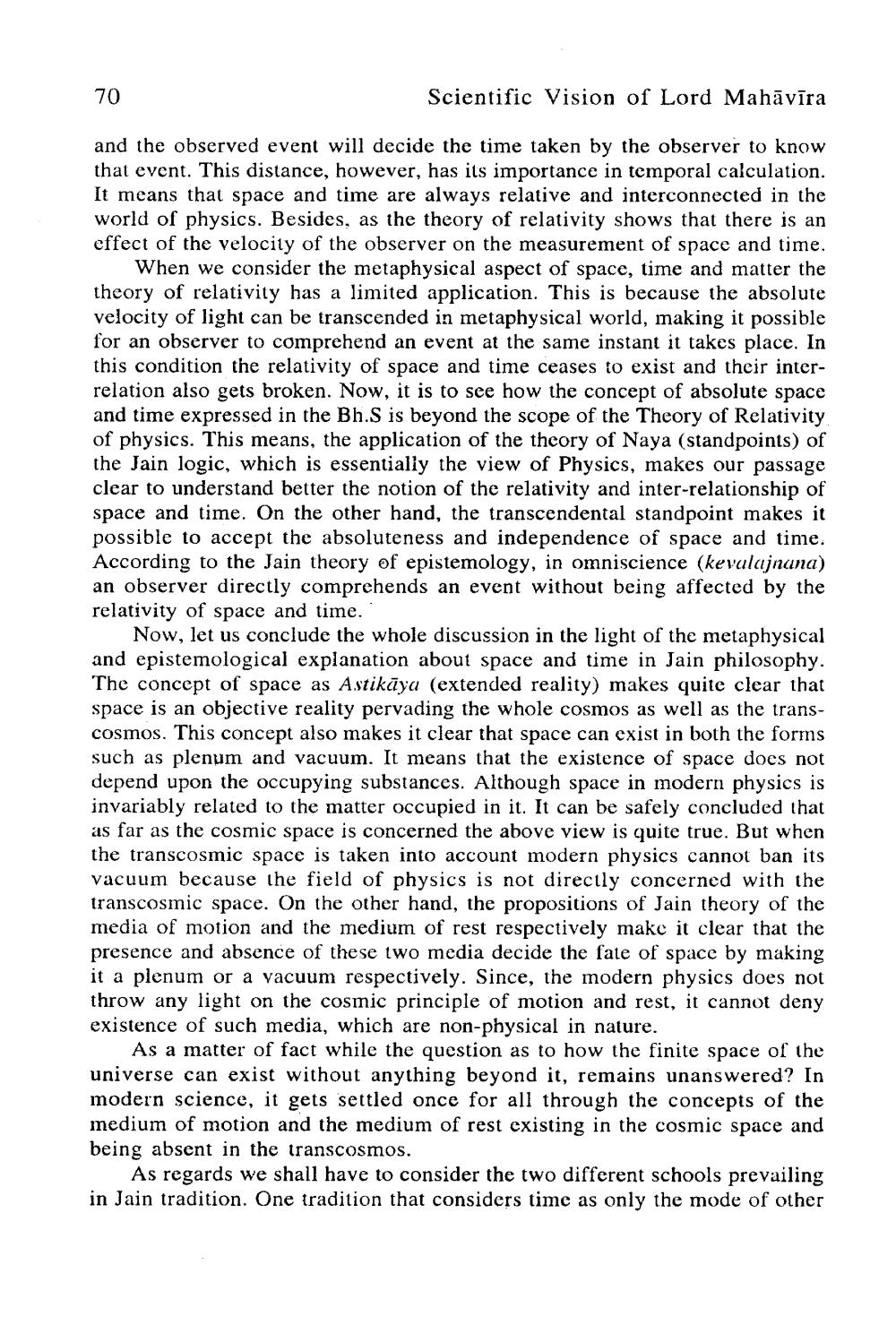________________
Scientific Vision of Lord Mahāvīra
and the observed event will decide the time taken by the observer to know that event. This distance, however, has its importance in temporal calculation. It means that space and time are always relative and interconnected in the world of physics. Besides, as the theory of relativity shows that there is an effect of the velocity of the observer on the measurement of space and time.
When we consider the metaphysical aspect of space, time and matter the theory of relativity has a limited application. This is because the absolute velocity of light can be transcended in metaphysical world, making it possible for an observer to comprehend an event at the same instant it takes place. In this condition the relativity of space and time ceases to exist and their interrelation also gets broken. Now, it is to see how the concept of absolute space and time expressed in the Bh.S is beyond the scope of the Theory of Relativity of physics. This means, the application of the theory of Naya (standpoints) of the Jain logic, which is essentially the view of Physics, makes our passage clear to understand better the notion of the relativity and inter-relationship of space and time. On the other hand, the transcendental standpoint makes it possible to accept the absoluteness and independence of space and time. According to the Jain theory of epistemology, in omniscience (kevalajnana) an observer directly comprehends an event without being affected by the relativity of space and time.
Now, let us conclude the whole discussion in the light of the metaphysical and epistemological explanation about space and time in Jain philosophy. The concept of space as Astikāya (extended reality) makes quite clear that space is an objective reality pervading the whole cosmos as well as the transcosmos. This concept also makes it clear that space can exist in both the forms such as plenum and vacuum. It means that the existence of space does not depend upon the occupying substances. Although space in modern physics is invariably related to the matter occupied in it. It can be safely concluded that as far as the cosmic space is concerned the above view is quite true. But when the transcosmic space is taken into account modern physics cannot ban its vacuum because the field of physics is not directly concerned with the transcosmic space. On the other hand, the propositions of Jain theory of the media of motion and the medium of rest respectively make it clear that the presence and absence of these two media decide the fate of space by making it a plenum or a vacuum respectively. Since, the modern physics does not throw any light on the cosmic principle of motion and rest, it cannot deny existence of such media, which are non-physical in nature.
As a matter of fact while the question as to how the finite space of the universe can exist without anything beyond it, remains unanswered? In modern science, it gets settled once for all through the concepts of the medium of motion and the medium of rest existing in the cosmic space and being absent in the transcosmos.
As regards we shall have to consider the two different schools prevailing in Jain tradition. One tradition that considers time as only the mode of other
70




